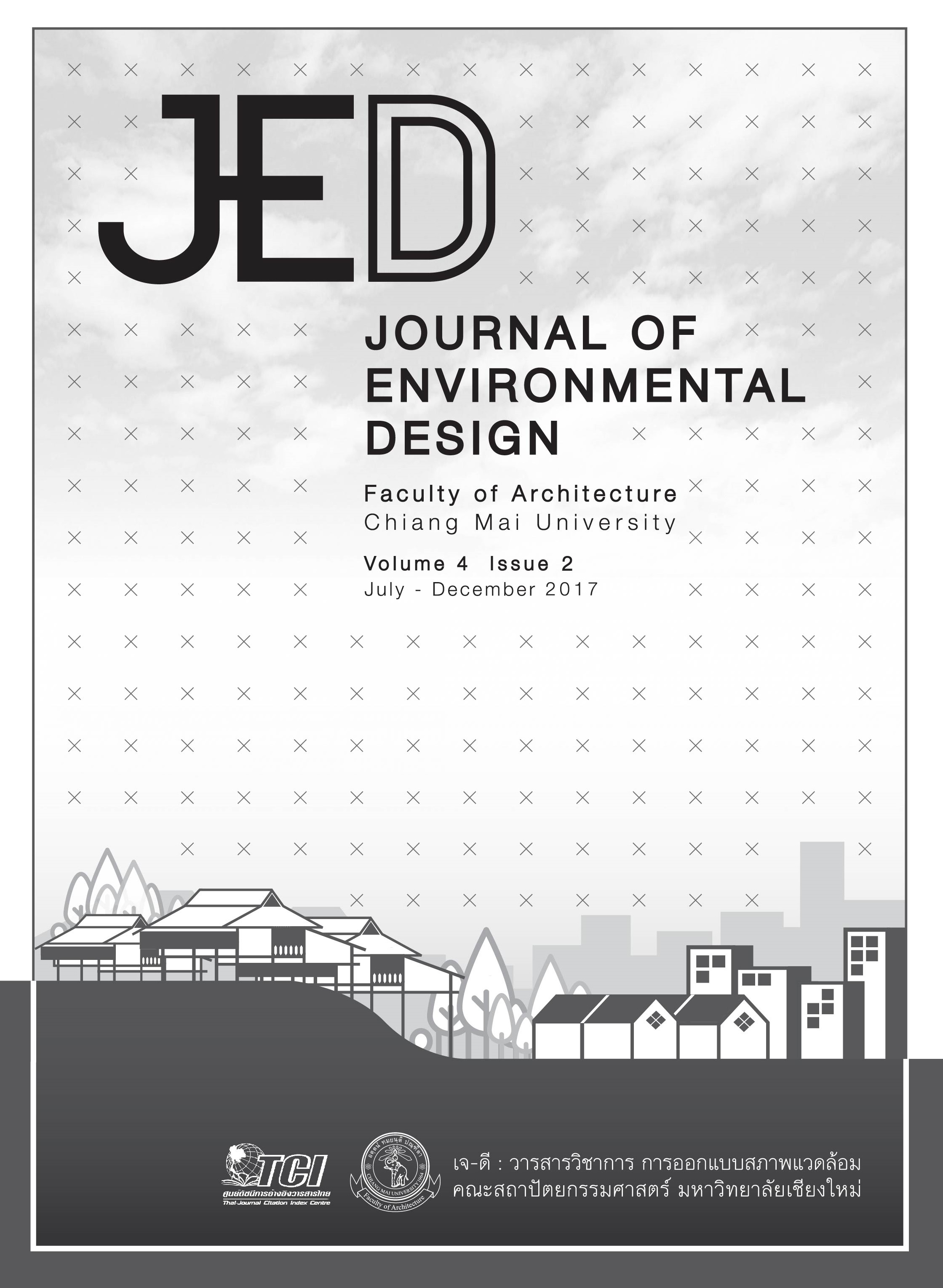สุขายะทางรูปทรงในงานสถาปัตยกรรม พระอุโบสถวัดเชียงทอง เมืองหลวงพระบาง (The shape harmony of the architecture Xieng Thong Temple Chapel in Luang Prabang)
Main Article Content
บทคัดย่อ
สถาปัตยกรรมเป็นผลงานการสร้างสรรค์ของมนุษย์ภายใต้อิทธิพลของประสบการณ์การสัมผัสรู้ความคิด ความเชื่อ ปรัชญาหรือศาสนา ที่สะท้อนความสัมพันธ์ของมนุษย์ที่มีต่อโลกหรือสภาพแวดล้อม การสร้างสรรค์งานสถาปัตยกรรมจนเกิดเป็นเอกลักษณ์ทางอารยธรรมนั้น ย่อมสะท้อนให้เห็นถึงภูมิปัญญาของมนุษย์ในวัฒนธรรมนั้นๆ ในการวางท่าทีหรือกำหนดคุณค่าและความหมายของความสัมพันธ์ระหว่างมนุษย์กับสภาวะแวดล้อม บทความนี้ นำเสนอการซึมซับภูมิปัญญาจากงานศิลปวัฒนธรรมที่สื่อออกมาในงานสถาปัตยกรรมในอดีต เพื่อนำไปสู่ความเข้าใจ และเห็นคุณค่าของภูมิปัญญาในอดีตอันเป็นรากฐานแห่งวัฒนธรรม เนื้อหาของบทความนี้พิจารณาคุณค่าและความหมายงานสถาปัตยกรรมที่ถูกสร้างภายใต้แนวคิดหรือปรัชญาของโลกทัศน์ตะวันออก วัฒนธรรมที่กำหนดให้พุทธศาสนาเป็นศูนย์กลางในดินแดนอุษาคเนย์ของวัดเชียงทอง เมืองหลวงพระบาง ถือว่าเป็นสถาปัตยกรรมที่ถูกสร้างมารองรับสถาบันทางศาสนาระดับเมือง พระอุโบสถวัดเชียงทองถูกออกแบบเพื่อเอื้อต่อการเข้าไปสัมผัสด้วยการรับรู้ทางการมอง อันถือว่าเป็นสัมผัสแรกสุดในการเข้าไปรับรู้งานสถาปัตยกรรมต่อรูปทรงจากการสังเกต พบว่า สิ่งที่เป็นโครงสร้างหลักในการควบคุมเอกภาพทางกายภาพของสถาปัตยกรรมภายในวัด คือ ความโค้งและความอ่อนช้อยของรูปทรงทางสถาปัตยกรรม เริ่มจากพระอุโบสถหรือสิม อันเป็นอาคารประธานภายในผังวัด ที่มีรูปทรงที่กล่าวขานในวัฒนธรรมหลวงพระบางตามรูปทรงของผู้หญิง แสดงความเป็นแม่ที่ปกป้องลูกในลักษณะของแม่ไก่
กางปีกปกป้องลูกไก่ เป็นเอกลักษณ์เฉพาะสำหรับสถาปัตยกรรมทางพุทธศาสนาแบบหลวงพระบาง จากความโค้งอ่อนนี้ มีผลโดยตรงต่อปรากฏการณ์ทางด้านรูปทรงในงานสถาปัตยกรรม เป็นสิ่งที่สอดคล้องกับหลักคิดและกระบวนการในพุทธศาสนา ซึ่งสื่อให้สามารถรับรู้ได้และเป็นสิ่งเชื่อมโยงพุทธศาสนาเข้าไปสู่ความเป็นเอกภาพของวัฒนธรรมหลวงพระบาง
Architecture is the creation of man under the influences of experiences including knowledge, ideas, beliefs, philosophy or religion that reflects the relationship between human and the world or the environment. Creating architecture as a unique civilization reflects the wisdom of human in that culture in determining the value and the meaning of the relationship between humans and the environment. This article presents the depth in absorbing the wisdom that is portrayed through the art and culture in architecture in the past. This leads to the understanding and appreciation of the ancient wisdom, which is the foundation of the culture.
The article considers the value and the meaning of architecture that was built under the Eastern concept or the Eastern worldview philosophy. Xieng Thong temple in Luang Prabang is a Buddhist architecture that serves as a Buddhism center in the region of Southeast Asia. Xieng Thong temple is an architecture that was built to accommodate religious institutions in the city and was built to attract human’s visual perception, which is always the first perception in studying the architecture style of the temple. The observation finds that the main structure that unifies the physical of the temple architecture is the artistically curved shape of the architecture, starting from the temple chapel or Sim, the main building that is a female form and is renowned in Luang Prabang culture. It presents the maternity of a mother protecting her child, like a hen protecting its chic by her wings; it is the uniqueness of this Buddhist Architecture: Luang Prabang. The soft curve affects the phenomenon of architectural form which is consistent with the main idea and process in Buddhism; to be recognized, and to be combined with the unity of Luang Prabang culture.


